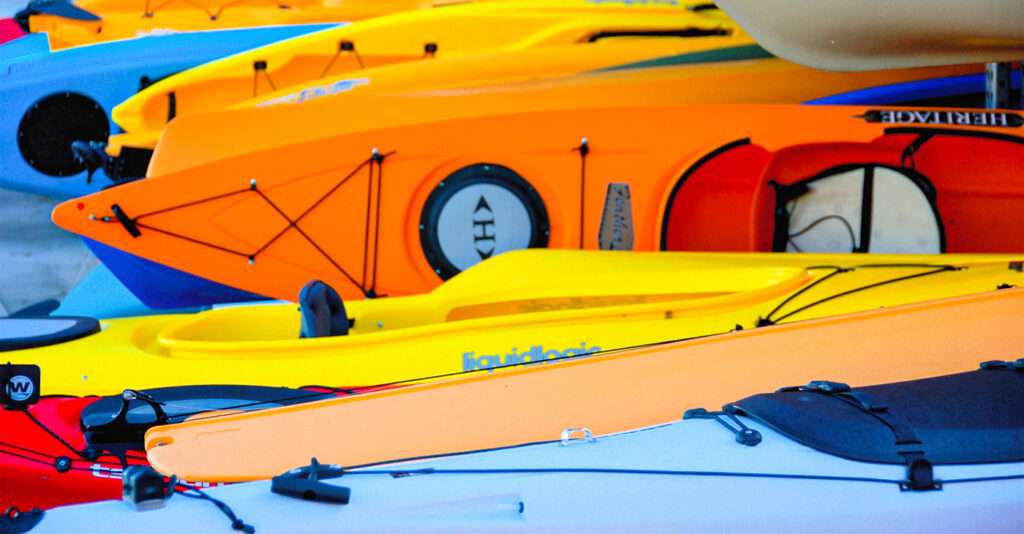It may seem like a silly task to read about how to hold a kayak paddle. That being said, I can’t even tell you how times I have caught people holding their paddle wrong, upside down, or even backwards. The following steps will help you to understand how to properly grasp and hold a kayak paddle.
Know the Anatomy of a Kayak Paddle
This step is the most basic of them all yet without it trying to understand the rest of the steps can be an exercise in futility. A kayak paddle, unlike a canoe paddle, has 2 blades attached to the shaft of the paddle. The shaft is the part of the paddle that you hold and the blades are the part that you pull through the water. A full understanding of these parts and the design features that go into making a kayak paddle is important for both performance and ergonomic reasons.
Make Sure the Paddle is Facing The Right Direction
It is a common mistake for kayakers to hold their paddle backwards the first time they pick up a kayak paddle. Although it may not immediately seem to make a difference which side of the blade pulls you through the water, it does have a significant impact on the amount of power you can generate with your stroke. Keep the part of the paddle blade that is concave or smooth facing you. The best way to visualize this is to picture the palm of your hand as a paddle. Keep your fingers and thumb together and ever so slightly angle your fingers inward. The palm of your hand represents the face of the paddle and the back of your hand represents back of the paddle. The face of the paddle is the part you want to pull through the water.
Make Sure The Paddle is Right Side Up
A symmetrical paddle doesn’t have a top or bottom. You can tell if your paddle is symmetrical by looking at 1 blade. If the top of that paddle blade has the same shape as the bottom of the paddle blade then your paddle is symmetrical. Many kayak paddles, however, are asymmetrical. This means there is a top and a bottom to the paddle blade. If you have an asymmetrical paddle it is important that you hold the paddle as it is designed. The top of the paddle is more horizontal than the bottom. The bottom has more of a tapered effect. Sometimes there is even horizontal writing on the paddle. Keeping the writing upright and not upside down is often a shortcut that will help you remember to hold your paddle correctly.
Determine Your Control Grip
Most kayak paddles have blades that are offset from one another. The best way to describe this is if you were to lay the paddle on the ground, one blade would lie flat on the ground while the other would be angled upward. This makes it necessary to maintain the correct grip. If you are right handed, your control grip will be with your right hand. If you are left handed your control grip will be with your left hand. When taking a kayaking stroke you would allow the paddle to rotate and reposition in your “loose hand” to make sure that each paddle always enters the water smoothly. The control grip does not change positions once it is on the paddle.
Grasp and Hold The Paddle
Go ahead and grab the paddle. Place your control grip on the paddle first. Then place your other hand on the paddle. Make sure that your hands are centered on the paddle. The distance between your hands should be just over shoulder width apart. If you were to put your paddle on top of your head while still holding on with both hands your, your elbows should have a slightly smaller than a 45 degree angle. Your grip on the kayak paddle should not be too tight. If you can see the whites of your knuckles, you are holding the paddle too tight.

